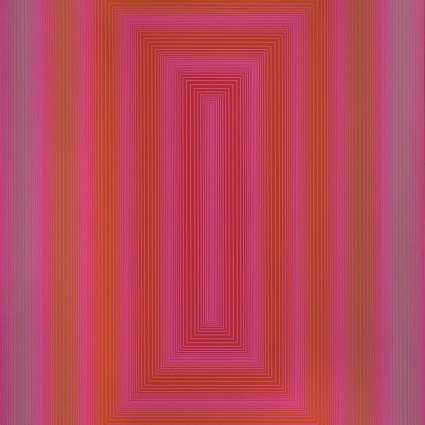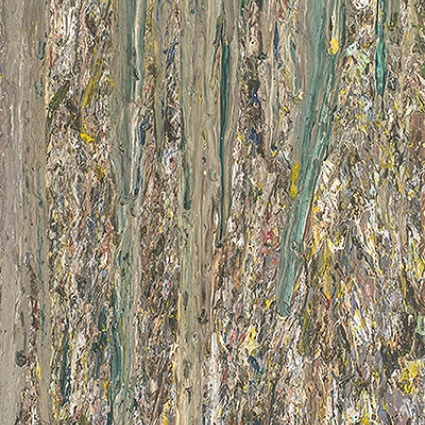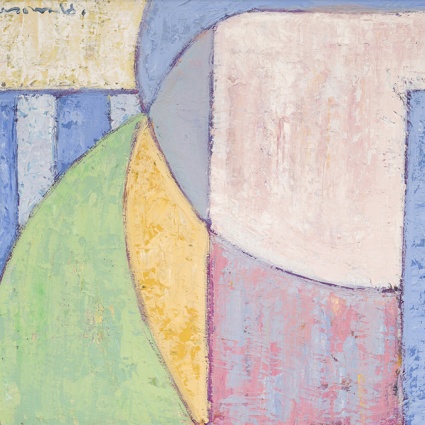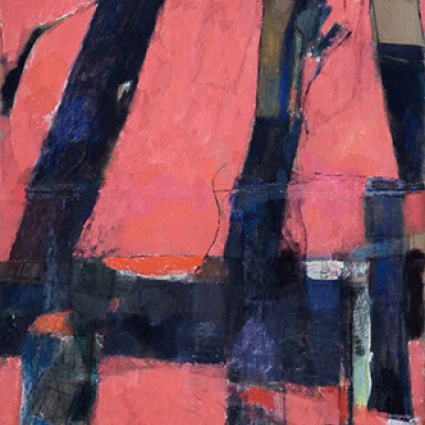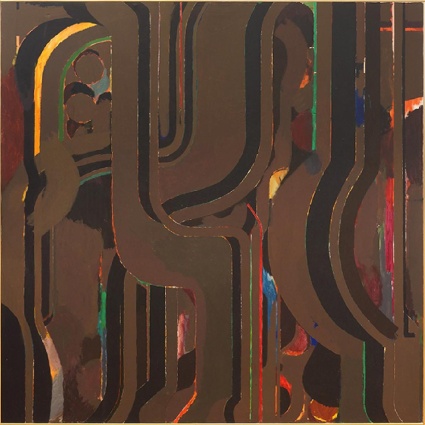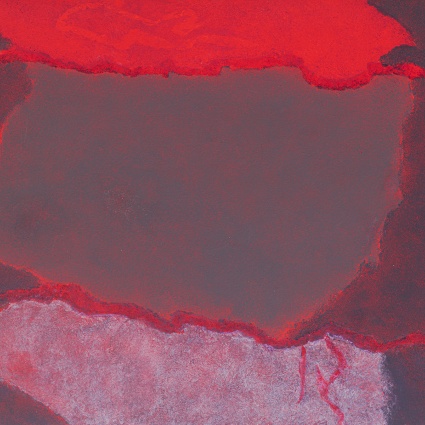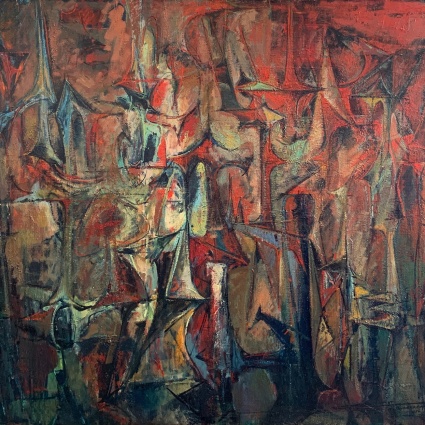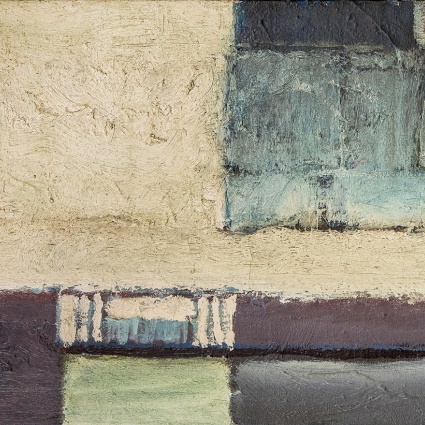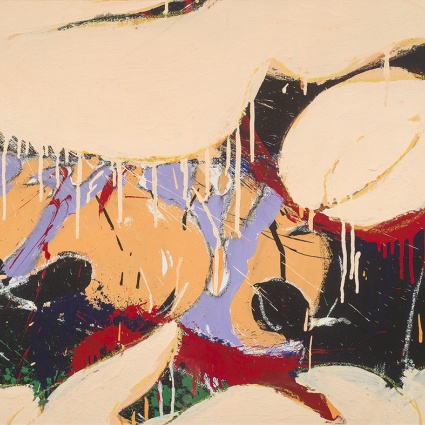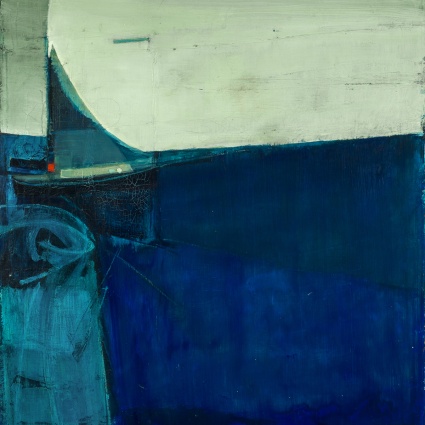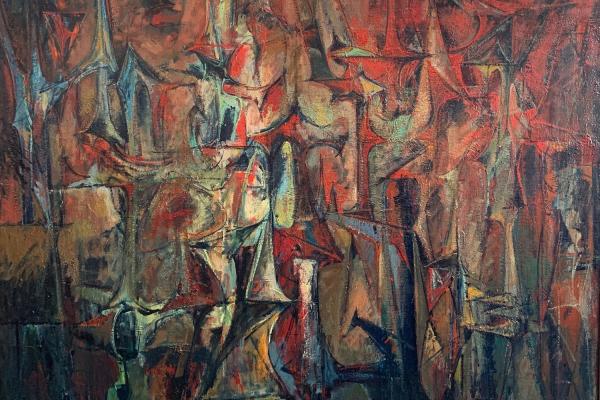
Vintage Treasures
Louise Nevelson
Louise Nevelson, born 1899, was an American sculptor best known for her monochromatic wooden assemblages. During the 1950s, she began to create unique arrangements contained in wooden frames amassed from a range of found objects—usually woodcuts or bits of furniture—that were then painted a uniform black, white, or gold, as seen in her seminal work Royal Tide I (1960). “I think most artists create out of despair,” Nevelson observed. “The very nature of creation is not a performing glory on the outside, it's a painful, difficult search within.”
Born Leah Berliawsky on September 23, 1899 in Pereyaslav, Russian Empire (now Ukraine). Her family emigrated to the United States a few years after her birth, Nevelson moved to New York in 1920 and enrolled in the Art Students League in 1929. She went on to study with Hans Hofmann and worked as an assistant for Diego Rivera before her first solo at Nierendorf Gallery in 1941. The Whitney Museum of American Art in New York gave the artist her first retrospective in 1967.
Nevelson died on April 17, 1988 in New York, NY at the age of 88. Today, her works are held in the collections of the Tate Gallery in London, The Museum of Modern Art in New York, the Art Institute of Chicago, and the Walker Art Center in Minneapolis, among others.
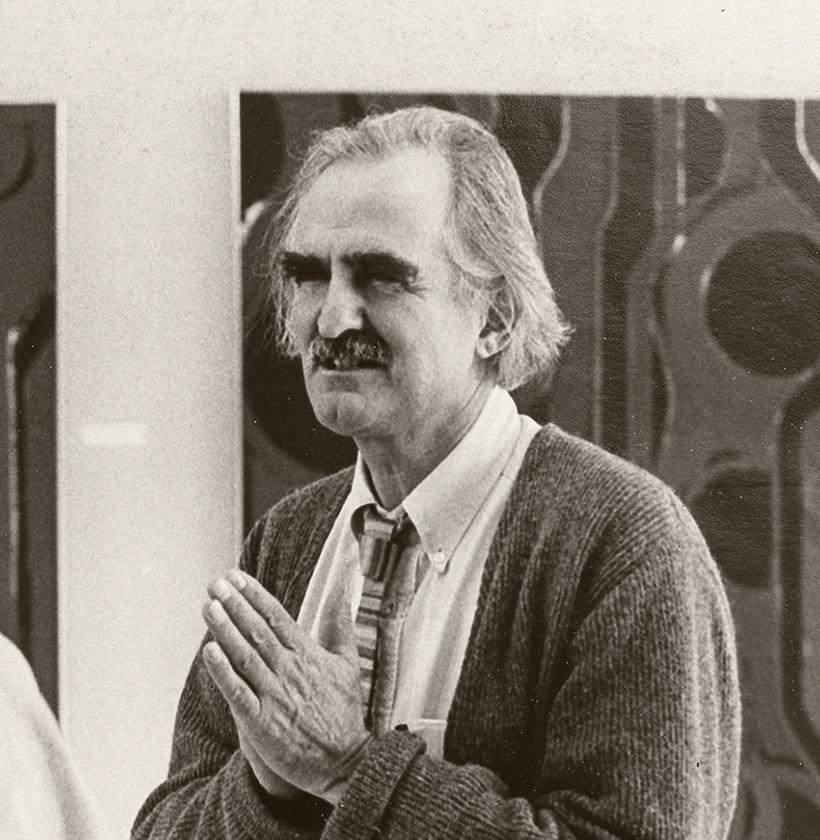
Arthur Osver
Throughout the many phases of his development as an artist, Osver was - as he claimed - always a landscapist. He would eventually define himself as an urban painter, his focus happening to be - as he put it - "on this world of wires and chimneys and tar paper and all the rest of it."
Richard Anuszkiewicz
Richard Anuszkiewicz was a contemporary American artist best known for his mesmerizing Op Art paintings. Anuszkiewicz's works are saturated with vibrant color arranged in jarring geometric abstract compositions, formally exploring the phenomena of light, color, and line and their effects on human perception. “I’m interested in making something romantic out of a very, very mechanistic geometry,” Anuskiewicz once said. “Geometry and color represent to me an idealized classical place that’s very clear and very pure.” Among his most famed works is Deep Magenta Square (1978), a hypnotic composition featuring the illusion of oscillating movement through contrasting color relationships. Anuszkiewicz’s interest in optics perhaps stems from his study under famed colorist Josef Albers while attaining his MFA at Yale University between 1953 and 1955. Later in his artistic career, he experimented further with the physical effects of optic phenomena through sculpture, creating geometric works that mimic his two-dimensional compositions.
Born on May 23, 1930 in Erie, PA, his work was well-received in the 1960s and beyond, garnering his inclusion in the Venice Biennale and documenta, as well as various honors including a 2000 Lee Krasner Award. The artist died at his home in Englewood, New Jersey on May 19 2020, just four days before his 90th birthday.
Theodoros Stamos
Theodoros Stamos was an American-Greek painter. He is best known for his large-scale gestural abstractions, and was the youngest member of the early Abstract Expressionist group alongside painters such as Jackson Pollock, Ad Reinhardt, and Clyfford Still.
Akin to Still, Stamos' paintings feature muted palettes and biomorphic abstractions, often appearing inchoate, inspired in part by East Asian aesthetics and philosophies. Stamos was met with generally favorable acclaim throughout his life and after, leading to positions teaching at the Black Mountain College until 1954 and at the Art Students League of New York until 1975, and inclusion in major collections such as that of the Art Institute of Chicago.
Born in New York, NY on December 31, 1922, he died on February 2, 1997 in Greece at the age of 74.
Hans Gustav Burkhardt
William Paul Morehouse
- American, born in San Francisco, 1929 and died in 1993.
- From 1947 to 1953, he attended the California School of Fine Arts where he studied under Richard Diebenkorn, David Park, Clyfford Still and Elmer Bischoff among others.
- Morehouse taught with Diebenkorn, James Weeks and Nathan Oliveira from 1958 until 1967 at the California School of Fine Arts later named the San Francisco Art Institute.
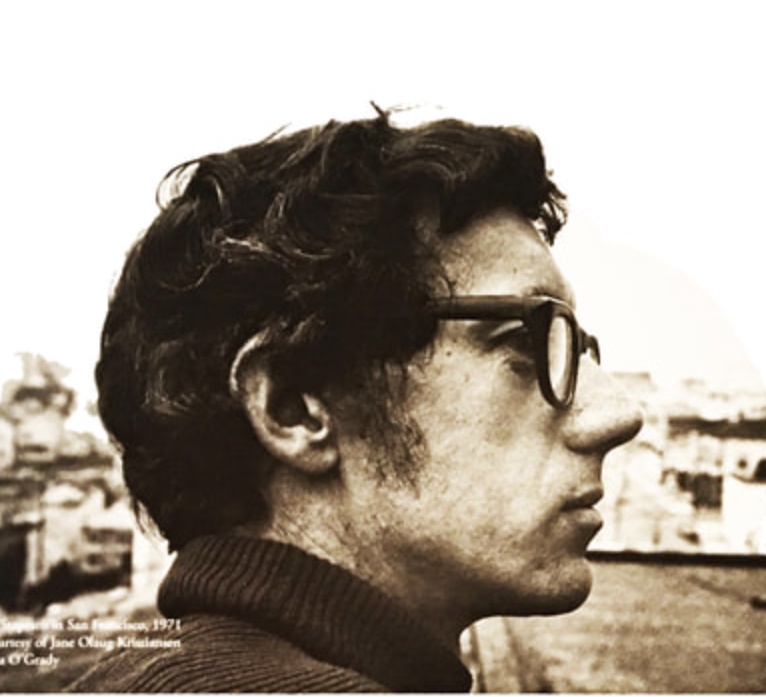
Raimonds Staprans
Raimonds Staprans is a contemporary Bay Area painter known for his depictions of fruit, chairs, and architecture. In a similar vein to the work both and Richard Diebenkorn, Staprans employs flat planes of color to create form and light.
Born in 1926 in Riga, Latvia, he and his family emigrated to America in 1947. The artist received his MA from the University of California Berkeley, where he studied under Hans Hofmann and Karl Kasten. Also a writer, Staprans is known for his plays, which give an insight into his painting process. In 2006, Raimonds Staprans: Art of Tranquility and Turbulence was released, the book provides context for how emigrating from Latvia influenced his development.
The artist lives and works in San Francisco, CA. His works are held in the collections of the Los Angeles County Museum of Art, the San Jose Museum of Art, and the Portland Museum of Art.
